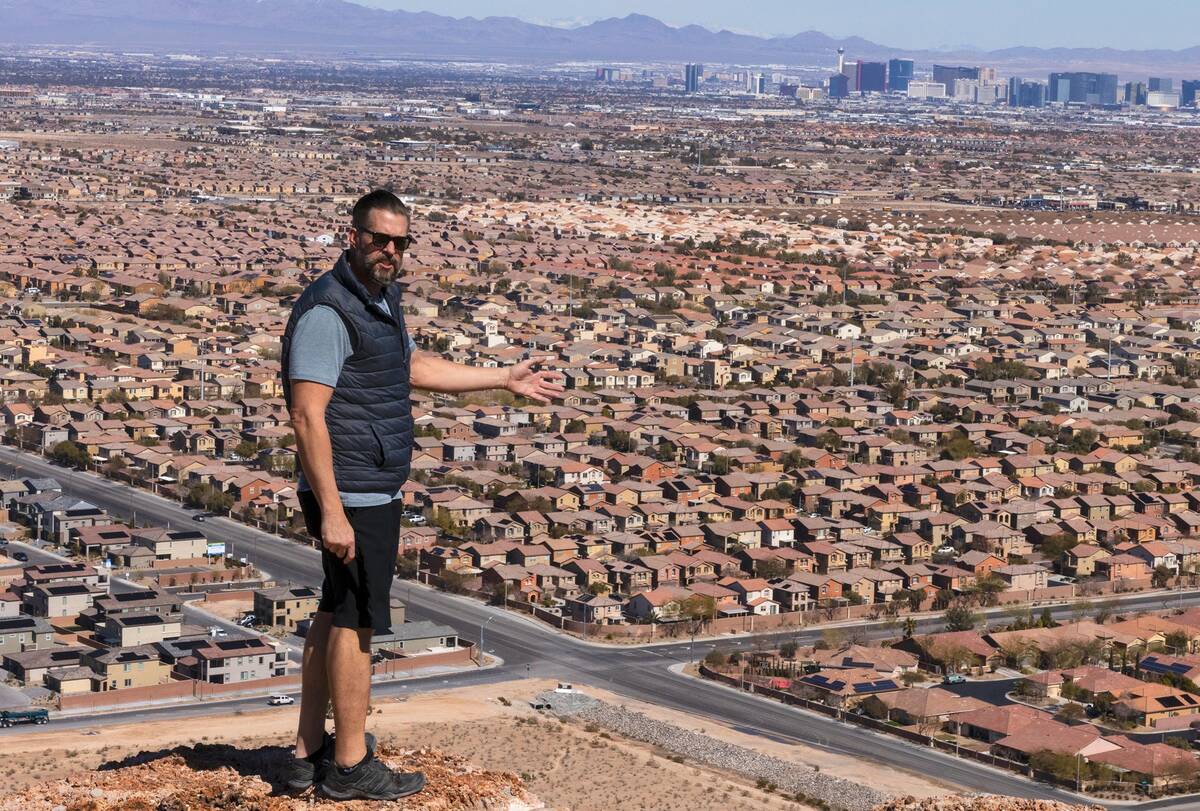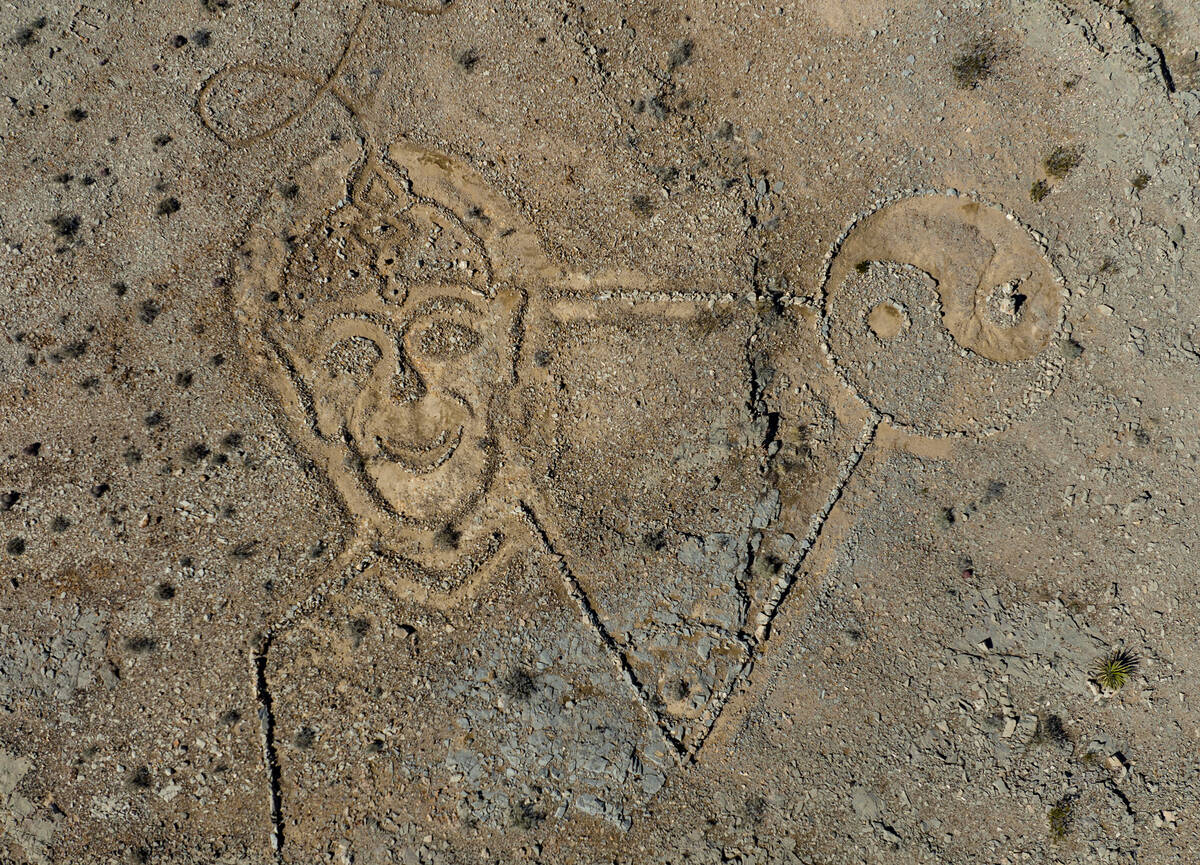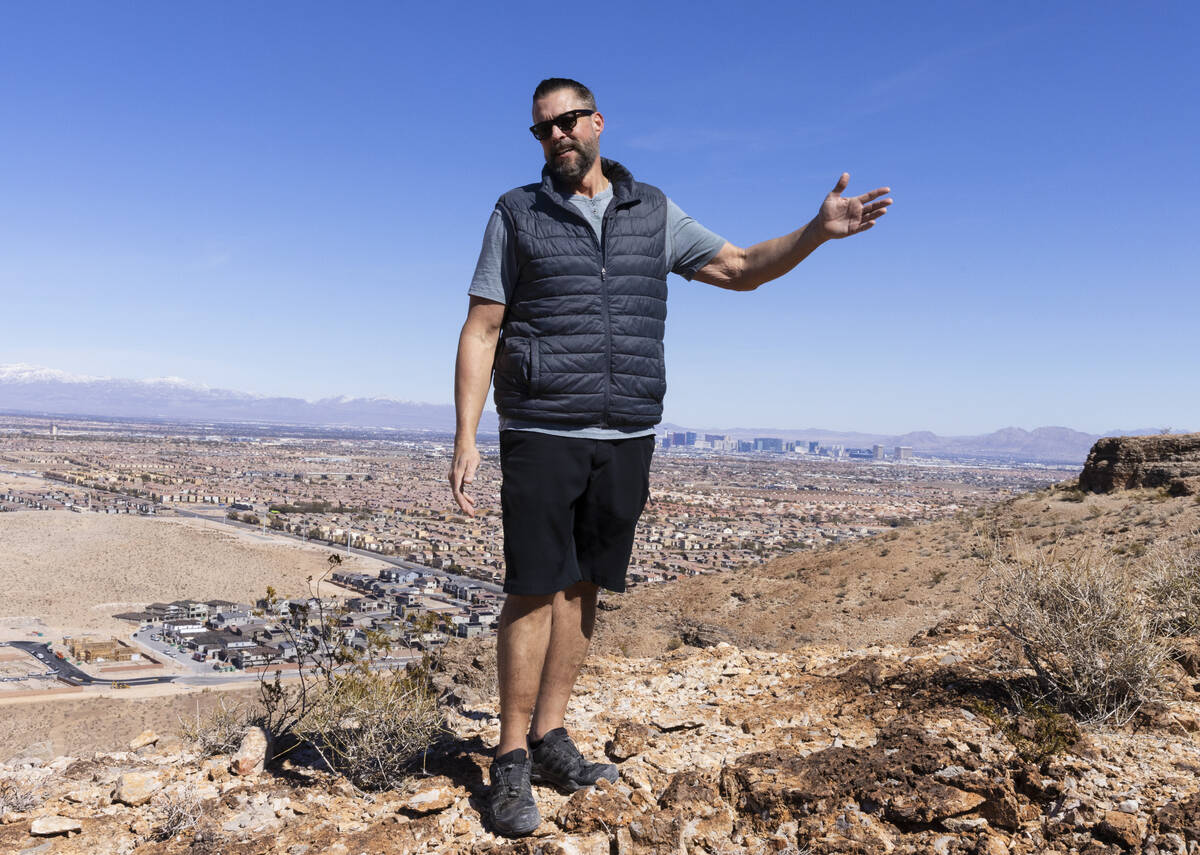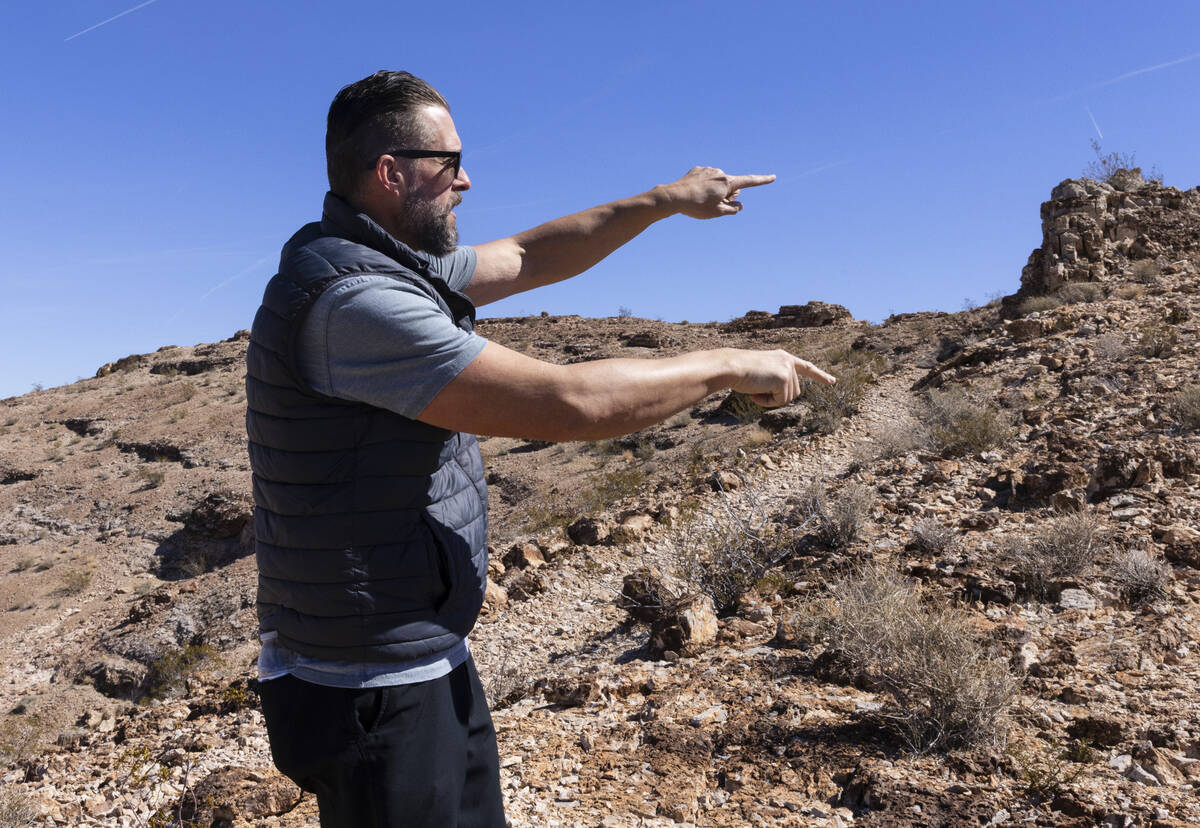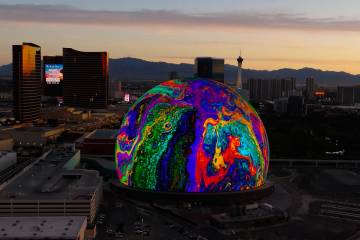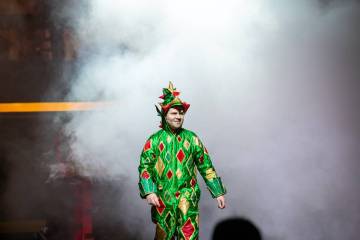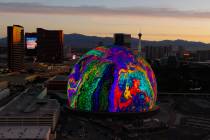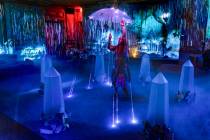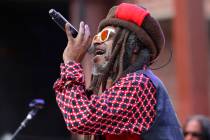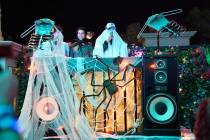‘Desert Monkey King’ artist comes forward
The “Desert Monkey King” has a creator.
The artist responsible for the mysterious artwork on a plateau in the southwest valley has come forward.
Matt Jones, 47, of Las Vegas, said he began the work in late 2016 when he would hike up the peaks just west of South Fort Apache Road at West Cactus Avenue, west of the Mountain’s Edge neighborhood where he lived at the time.
The piece of land art, which is an east-pointing triangle with a yin and yang symbol and a smiling monkey’s face, hides in plain sight when you’re standing on top of it because the rocks that make up the image blend in with the countless other rocks scattered about the plateau.
As a result, the “Desert Monkey King” can only really be seen when its design becomes apparent from above — whether it be from the mountainous peak that overlooks it, or from a drone or Google Maps.
“So, I made a circle and then fashioned it into a yin-yang and then it just kind of took shape from there,” said Jones on Thursday, as he stood at the summit of that peak that looks over the artwork. “Everything is oriented to the east, so if you come up here, you can catch the sunrise. It’s beautiful.”
Jones, a father of five who works in massage therapy and body work, didn’t name the piece the “Desert Monkey King.” But since the artwork first appeared in the Las Vegas Review-Journal in January, it has at least adopted a more defined presence online. Somebody, not Jones, took to Google Maps and labeled it “Desert Monkey King.”
Jones said the piece evolved over the years. By about 2018 or 2019 it was mostly complete, he said. He said he used rope to make sure the lines of rocks stacked side by side were straight. He also sketched out designs of the piece.
“It’s just kind of a labor of love,” he said.
Looking down on his creation from high above the southwest corner of Las Vegas on Thursday, Jones jokingly said he was watching a TV show about the Nazca Lines, which are huge images made from lines in the Peruvian desert, when he thought to himself, “Well, what about the ‘Mattzca’ Lines?”
Jones said the piece began with a circle. It then evolved to include a Merkaba symbol, which looked like a Star of David but wasn’t intended to be that, Jones said.
After somebody apparently dismantled the symbol, Jones changed the circle into a yin and yang symbol and added the monkey’s face and the triangle, whose sides are more than 50 feet in length. Jones said a unalome, which is a Buddhist symbol, is what is emerging from the monkey’s head. He agreed there was some inspiration from Hanuman, a figure in Hindu mythology who is referred to by brittanica.com as the “monkey commander of the monkey army.”
And whereas the monkey previously had a stern frown, Jones changed it to a smile in the past year or so. “Now that the pandemic’s over, I don’t know, you could put a smile on his face,” Jones said.
Dr. Dave Golan, who brought the artwork to the Review-Journal’s attention, also said he wasn’t the one who named it “Desert Monkey King” but thought it was a great name. Jones said he also liked the name.
As of Thursday it had two five-star reviews, cementing its burgeoning status as a destination for hikers. The area is known to hikers as the Twin Sisters, a reference to the two hills. The artwork is situated at the top of the northernmost hill.
On Thursday, two hikers, Liz Kerby, 70, of Las Vegas, and Linda O’Leary, 78, of Boulder City, were on their way to the peak — along what’s known as the Twin Sisters hiking trail — to see the artwork from above.
“We came to see the Monkey King, as it’s now affectionately known, I guess,” Kerby said.
“It is awesome. I just told Liz, it looks like we’re in the Alps or something around here with all this snow around here,” O’Leary said of the view.
But the artwork sits on land owned and managed by the federal Bureau of Land Management. Because of this, a bureau spokesperson has said that while such art can be a valuable presence on BLM land, such artworks require a permit before they can be undertaken.
The reason is that BLM wants to ensure that the natural landscape and wildlife habitat isn’t disrupted by any man-made artistic project.
Because Jones didn’t know about the requirement, he didn’t get a permit. But he said he was cognizant of the natural environment while creating the piece, which involved only the rearranging of the rocks that were already present at the site. He said there is an ant hill near one of the monkey’s eyes and that he was careful to leave that alone.
BLM spokeswoman Kirsten Cannon said in an email Thursday that there was no update on BLM’s efforts to investigate the site to make sure the environment hadn’t been damaged or compromised by the piece. She urged Jones to contact BLM to discuss the art.
“We are not aware of increased traffic to the area,” Cannon said, when asked if BLM had noticed if more hikers were scaling the hills to see the artwork.
Jones said he hopes BLM will leave the piece alone. He said he would be “a little bummed out” if they dismantled it and said it would be “cool” if they decided to keep it intact.
“Really, I just came up to here to get some exercise, get some sun, get a little solace,” Jones said. “It’s an awesome hike. It’s a 3-mile loop here on the southwest side of town. It’s the best hike in Vegas.”
Contact Brett Clarkson at bclarkson@reviewjournal.com. Follow @BrettClarkson_ on Twitter.



